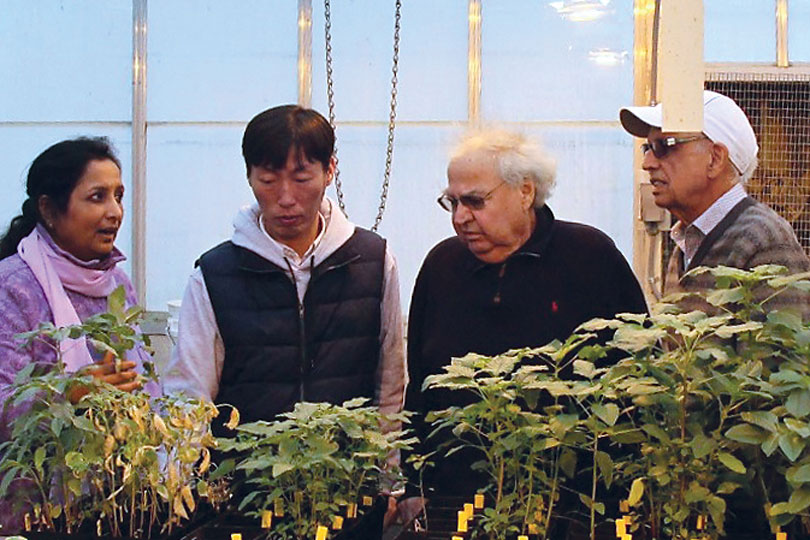By Jessica Domel
Multimedia Reporter
Eliminating glyphosate-resistant weeds from your fields could soon become a lot easier.
Researchers at Kansas State University (K-State) have uncovered what allows weeds like Palmer Amaranth and waterhemp to thrive despite herbicide use.
“The genetic information in all plants and animals, including humans, is coded in the chromosomes. These are linear physical structures. All the genetic information is in there. What we found in glyphosate resistance plants was that this genetic information was actually outside the chromosome in these circles of DNA,” Dr. Bikram Gill, K-State distinguished professor, said. “This is something totally new. This has not been observed in any living plant or organism.”
K-State researchers Dal-Hoe Koo and Bernd Friebe, the chromosome experts involved in the research, found the glyphosate target gene and other genes actually escaped chromosomes in glyphosate-resistant plants to form a separate, self-replicating circular DNA structure.
The extra-chromosomal circular DNA (eccDNA) has one copy of the gene that produces an enzyme that is the target for glyphosate.
There are hundreds of eccDNA in each cell, so the amount of the glyphosate-resistant enzyme is abundant. So, when farmers apply glyphosate, no matter how much is applied, the weed is resistant to the herbicide.
“Apparently these circular DNA can increase rapidly and amplify the enzyme which is the target of glyphosate. That rapidly provides resistance,” Gill said. “That’s what the excitement is all about. Now that we know how the resistance happens, we can think about some of the ways to overcome this problem.”
Researchers also found once a weed has acquired eccDNA, glyphosate resistance may evolve as quick as one generation.
“We think that the resistance via eccDNA is transitory. It can be passed to the weed’s offspring and other related weed species,” Gill said. “We have somehow caught it in between becoming permanently resistant. Eventually, we think that these eccDNAs can be incorporated into the linear chromosome. If that happens, then they will become resistant forever.”
To prevent that from happening, the researchers will use their information on the ring chromosome to try to reverse glyphosate resistance.
“These glyphosate target genes appear to present in the ring chromosome,” Dr. Mithila Jugulam, associate professor in the K-State Agronomy department, said. “We know that these ring structures are not stable unless they get incorporated back into the linear structure. We hypothesize that because of instability of ring structure, potentially if growers do not apply glyphosate continuously, there may be a possibility that these structures can dissipate and plants may become susceptible to glyphosate. That’s our hypothesis we would like to test.”
Jugulam and Gill said they hope to look at the molecular aspects of the ring structures and test their hypothesis. In the meantime, Jugulam encouraged farmers to be mindful of the pressures on pigweed.
“The important aspect, especially with Palmar Amaranth, is do not put more pressure with the glyphosate,” Jugulam said. “Just use different herbicides or crop rotation.”
The discovery may help more than agriculture. Gill said there’s a published paper linking eccDNA and cancer.
“Cellular mechanisms rapidly respond to stress when the cellular organism is put under stress either by some drug or something else,” Gill said. “Apparently these structures can amplify and respond to their stress. This is a new phenomenon in biology. We are very excited. This is what want to look into.”
Jugulam and Gill’s research can be found in the March 12 edition of the Proceedings of the National Academy of Sciences.

